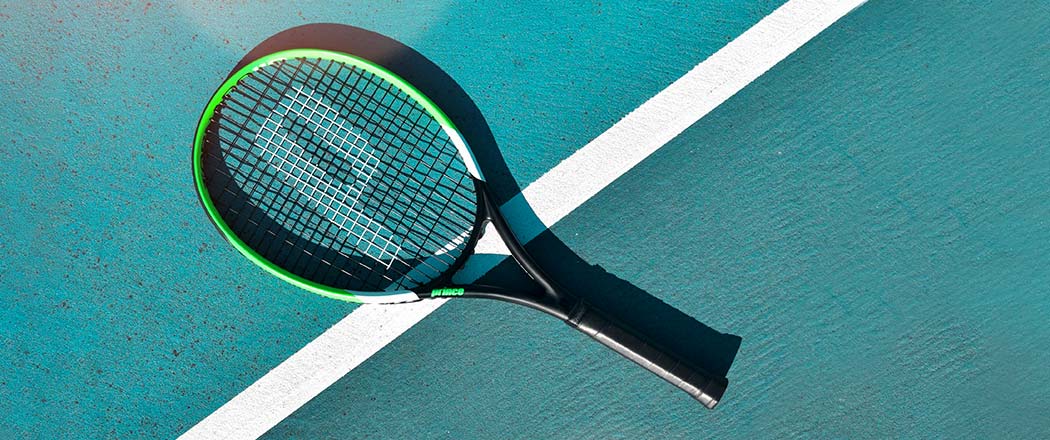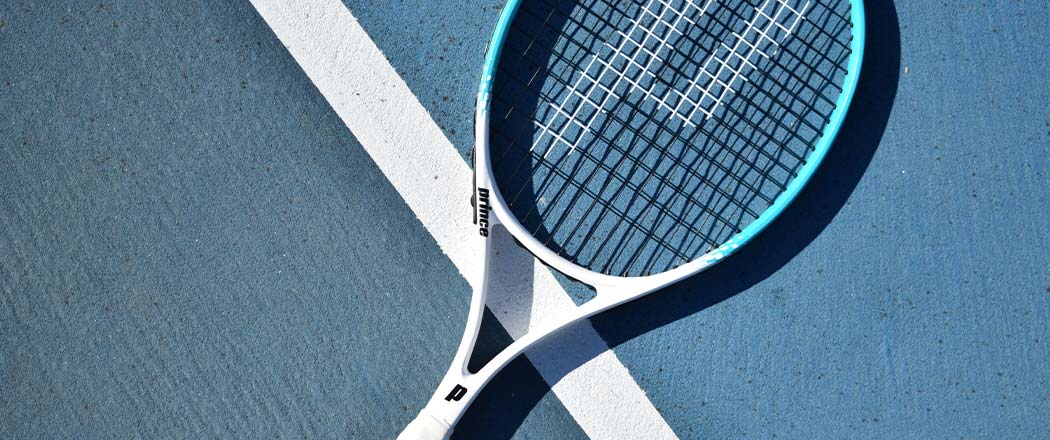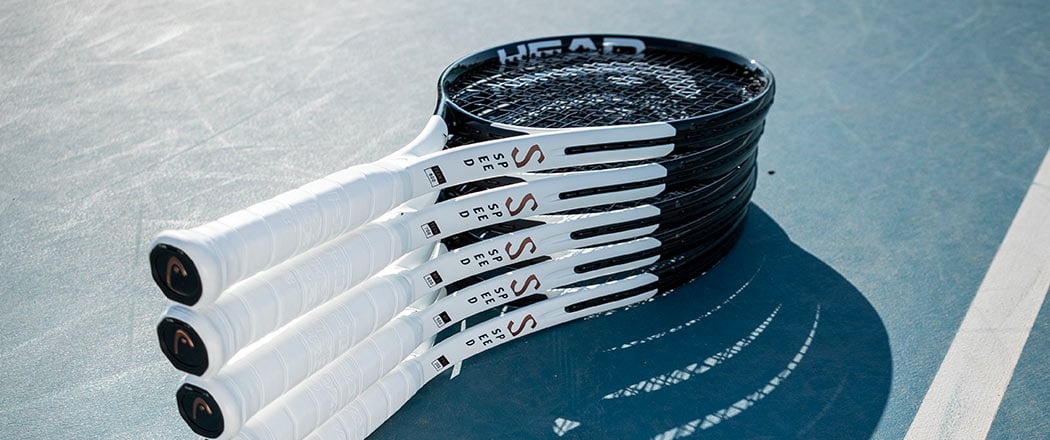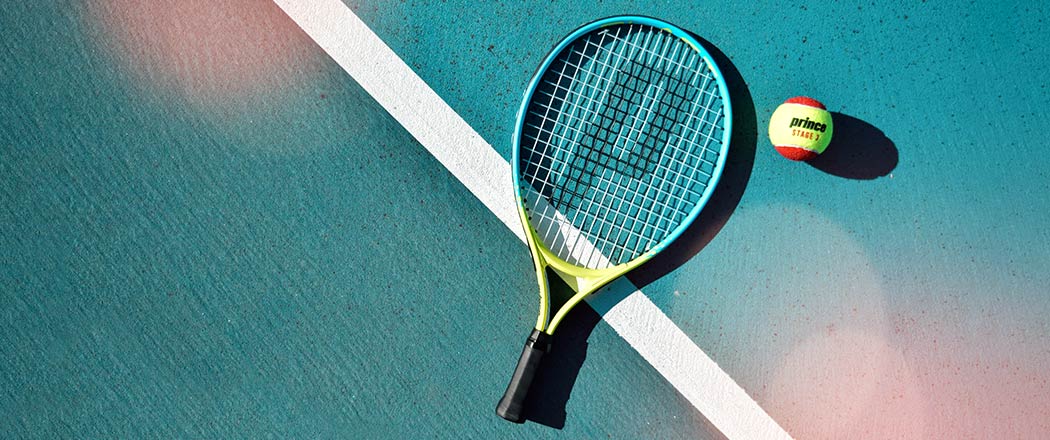When it comes to any kind of sport, having the right gear is one of the most important factors for success. Not only can it have a big impact on your performance, but it can also help improve how your body moves when responding to an opponent. Tennis is a sport that relies heavily on good hand-eye coordination but is a game that everyone can play and have a go at. Having the right tennis racquet, whether you play professionally or just for fun, will impact your form and overall performance.
With so many models, brands, and styles on the market, it can be hard to know which type of racquet is best going to suit you and your playing needs. In this guide, we've broken down some helpful tips on what to look out for when selecting a racquet so you can dominate on the court in your next game.
How to Buy the Right Tennis Racquet
There are many facets to buying the right tennis racquet - from different weights to head shapes, even different styles and lengths of grips are on offer. Having the right racquet at your disposal will not only give you a comfortable playing experience but actually help you improve over time and become a better player.
Racquet Types
When choosing your tennis racquet, it’s important to understand your general playing style and the type of games you’ll be playing in, whether they’re competitive or casual:
Power Racquets
Power racquets, as the name suggests, offer players large amounts of power in their shots. Ideal for players who like to use slow and controlled swings, power racquets are generally more forgiving as they offer a large sweet spot.
All Round Racquets
All-round racquets are great for players who are looking for a racquet that can support both their power and control while playing.
Made for players with a medium to long swing, an all-around racquet is great for intermediate players, players who are training for competition level and junior players transitioning to senior levels.
Control Racquets
Control racquets are ideal for players who have a long and fast swing.
In contrast to a power racquet, a control racquet does not offer any extra force, and power needs to be generated by the player. Control racquets offer excellent stability and accuracy for each shot but are usually less forgiving due to a smaller sweet spot.
Control racquets are usually heavier, so not ideal for junior players.
Junior Racquets
Junior tennis racquets are specifically designed for children.
They are usually shorter and have a smaller head size. They are also usually lighter in construction.
What about the Sweet Spot?
The sweet spot is a term used to describe the point on a tennis racquet, between the middle and the top of the racquet, that propels the ball with maximum power and minimal vibration on the hands. It’s the ideal spot to hit the ball, and the size of the sweet spot is determined by the size of the racquet head – for example, a smaller control racquet will have a smaller sweet spot compared to a larger power racquet.
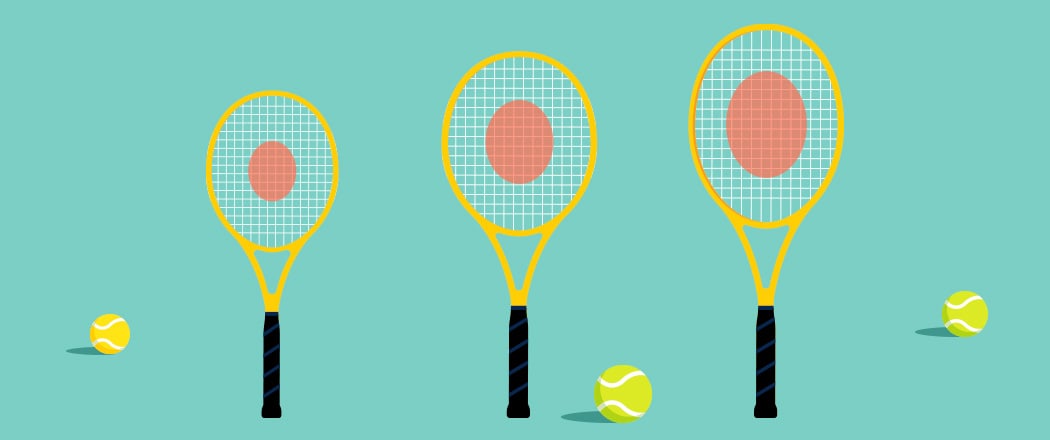
Determining the Different Sizes of Tennis Racquets

With anything, tennis racquets come in many different shapes and sizes and no racquet is made the same. So it's important to pick the right one for your skill level. When it comes to the different size racquet heads, each one will give you a different amount of power and control over your shots.
Beginner Players
Beginner players, or people who play recreationally, should aim for a head size bigger than 100 - 105 square inches. The larger surface area will give you a nice starting point when beginning, as it increases the size of the sweet spot and typically a larger head will give the player more power. This makes it really easy to hit the ball, however, a bigger head will mean you have less control over your shots, but this type of racquet will help you increase your skill to being able to have more control over time.
Intermediate Players
As an intermediate player, you have learnt to have more control over your shots and don't require as much surface area to play well. At an intermediate level, players should aim to have a racquet head size between 95 to 100 square inches. A smaller racquet will provide extra control, although you might have to sacrifice some power, but if you've been playing for a while you should have enough strength to produce the power you need.
Advanced Players
For advanced players, the choice is up to you. If you've been playing for years, then you've probably built up enough stamina, strength, and endurance that you have the skill and experience to play with a smaller racquet head (ranging from mid size to mid-plus). However, it comes down to the individual and there's no right or wrong racquet size to use as long as you can play and perform well.
What About Weight?
Beginner Players
Racquet weight can have a dramatic effect on your performance and swing. As a beginner player, you should aim for a racquet that is much lighter, around 11 oz or around 300g, as this will help get your arm and body used to the movement. If you have a racquet that's too heavy, this could lead to injury as your body is not used to or built up to swinging a heavy racquet.
Intermediate and Advanced Players
Intermediate and advanced players can aim for a heavier racquet, as over time your body has gotten used to the movement and would have built up enough strength and skill. Heavier racquets allow for more control and stability over your shots, so will require more experience when using.
The Different Grips
When it comes to deciding on what kind of tennis racquet you want to buy, you'll want to make sure that the grip of the racquet is to your liking. Most tennis racquets come with a grip from 4 inches to 4 ¾ inches (around 10 to 12 cm). Although not a huge difference, it can have a big impact on your grip. If the grip is too small, you won't have a firm grasp while playing which could lead to injury from over-gripping. If the grip is too big, this can put extra strain on your arm muscles and it won't be comfortable to play with.
An easy way to find your grip size for a tennis racquet is to measure with a ruler or a measuring tape:
- Hold out the hand that you hold the racquet with.
- Take a ruler or measuring tape and line it up next to your ring finger.
- Measure from the top of your ring finger to the top of the bottom lateral crease of your palm. It should be between 4 and 4 ¾ inches or around 10 to 12 cm.
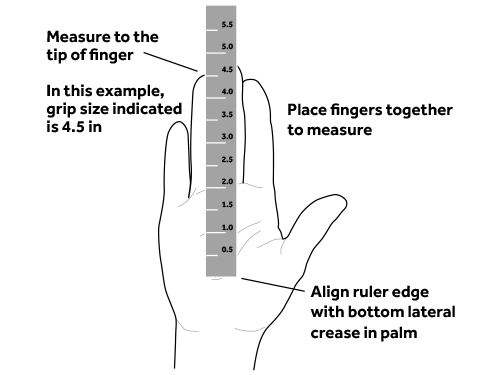

When measuring for junior players, it’s important to measure their racquets properly, as one that is either too big or too small for their age can result in bad playing technique and injury while playing, especially if the racquet is too heavy.
Tennis Racquet Size Guide

Racquets for Different Expertise Levels
When choosing your racquet, it’s easy to jump in and select the racquet that looks the nicest or choose one based on brand. Choosing the best tennis racquet for you will come down to several factors, including:
- Player level
- String pattern and control
String Pattern
For all tennis racquets, there are two types of string present, which include:
- Main strings: These strings run the full length of the racquet, from the top to the bottom
- Cross strings: These strings run across the racquet, from left to right
Open String Pattern
A common type of string pattern is the open string pattern, usually 16x19. The open string design means that it is easier to hit with depth, power and spin. The open string pattern grips the ball, giving it the power to spin.
Dense String Patterns
Another common type of string pattern for tennis racquets is dense string pattern, usually 18x20. This string pattern is great for players who use a flat swing and allows for more precision and control overall.
Racquets for Player Level
Beginner
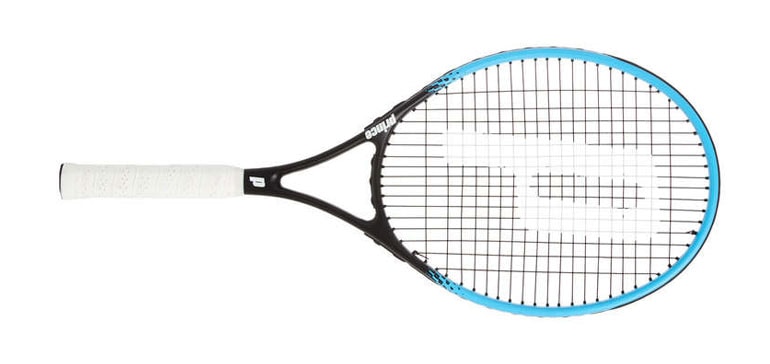
Ideal for social play, the Prince Strike 100 Tennis Racquet is engineered for power, spin, durability, and feel. Its lightweight alloy frame is engineered to withstand the impacts and demands of the game, while its 27-inch head and strong Oxford string provide great power, poise, and control. The racquet’s medium-sized Polyurethane grip offers a soft cushion between your hands and the racquet handle, while effectively resisting sweat, shock, and vibration. Whatever game you play, this Prince will make you feel like royalty on the court.
Intermediate
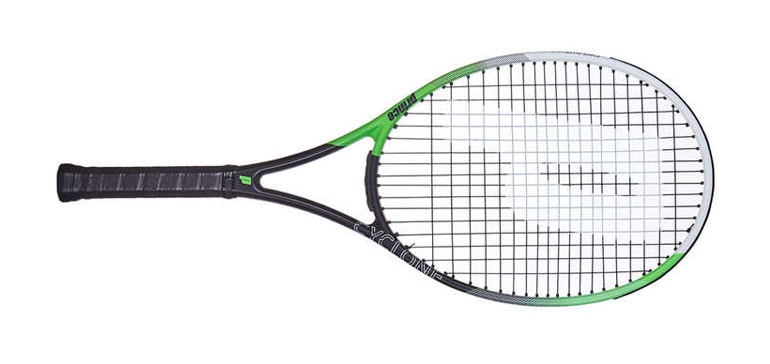
The versatility of this racket makes it perfect for players of all skill levels. Its unique head provides enhanced performance with improved durability, greater strength, and a larger sweet spot for precise control, easy manoeuvrability, and superior spin. Made from 100% graphite, the Prince Cyclone 100 Tennis Racquet’s well-balanced design elevates your game, and its comfortable grip enhances power and control in every shot.
Advanced
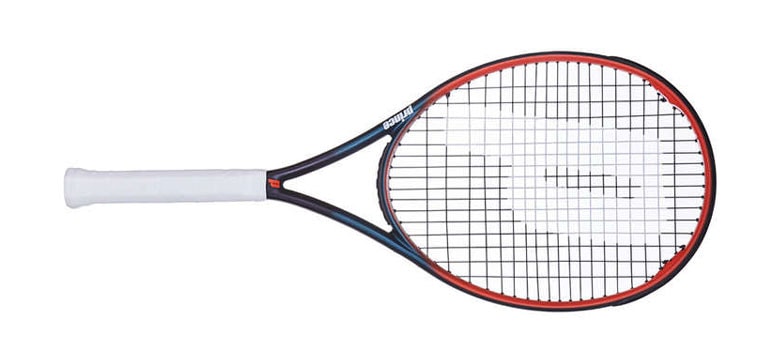
Designed for players at all levels, the versatile Prince PowerStream Tennis Racquet has it all. Precision-crafted, this 100% graphite tennis racket has a head designed for enhanced strength and durability that can withstand intense gameplay. Its larger head size provides a greater sweet spot, affording superior control, manoeuvrability, increased power, and spin. Additionally, there are two grip sizes to choose from, so you can find the right fit for your game.
Junior Levels
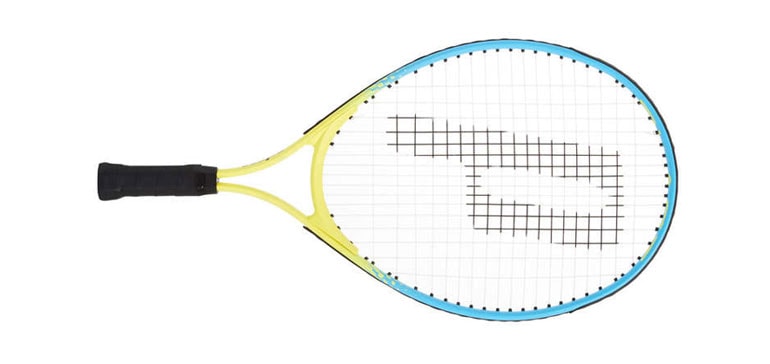
Prepare for blast off with the Prince Blast Junior 23in Junior Tennis Racket. Featuring a string tension of 35-40 lbs, it's designed for power, spin, durability, and feel. This makes it ideal for junior players who are working on their game. Its alloy material makes it strong and durable, so it can withstand impacts during play. Additionally, it is very lightweight, which allows young players to manoeuvre and control the ball more effectively. It comes complete with a cushioned grip that resists sweat and vibration. The Prince Blast is everything a junior player needs and more.
To find your next racquet, shop our massive range of tennis racquets from rebel now.
